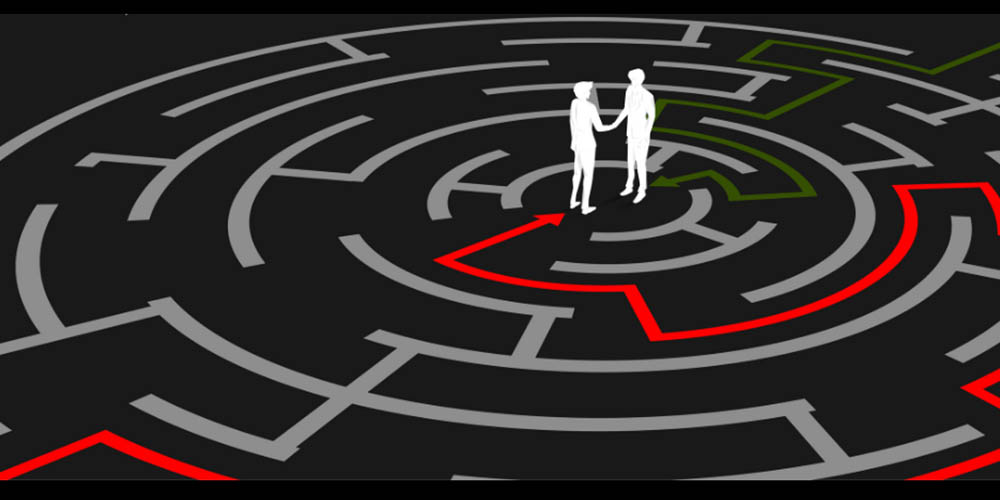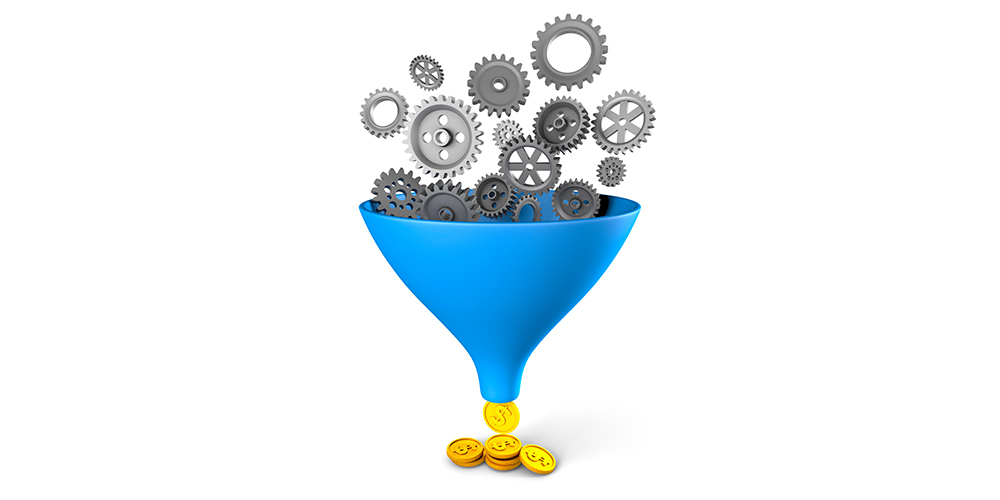How to win Big Ticket Size Deals in the Capital Goods business (B2B)?
It's no secret that selling to other companies may be difficult. You'll fail if you don't recognize B2B selling for what it is: a high-stakes selling game that necessitates a completely different approach than direct-to-consumer selling.
Before we get into the insider advice, let's define what B2B selling is all about.
What is B2B selling?
Business-to-business sales (B2B) refers to the sale of goods or services from one company to another rather than from one company to a consumer. B2B sales deal frequently have bigger dollar values and longer sales cycles than consumer sale deals. B2B sales, when done correctly, have the potential to be very profitable as well as deeply fulfilling. As a B2B salesperson, it's critical to create a sales process that works for your company, prospects, and overall objectives. Here are some crucial phrases to incorporate into your B2B sales process.

How to create a B2B sales process.
Let's take a look at how a good B2B sales process might look.
- Compile market size for potential availability.
Perform high-level market research to understand the current condition of demand for your product or service before starting the B2B sales process. To understand what messaging your prospects are hearing from other sources, get a clear picture of who your competitors are in your segment and acquaint yourself with their approaches and plans. Have a clear picture on overall market size and where your product or service fits for participation.
- Create a buyer persona that represents your ideal customer.
Take the time to figure out which businesses meet your target consumer persona. Be on the watch for contextual information about how business is progressing, in addition to what your prospects buy or order. Is there a new product that they've just released? Have they recently completed a round of funding if you're selling to startups? Have there been any changes in leadership in the last six months? This data can help you figure out if organizations are willing to invest in your products, and it's a good supplement to your buyer profile data.
- Create a buyer's journey map.
Now that you've figured out who your target market is and how your product will help them, it's time to figure out how they'll pay for it. Walkthrough the steps a potential customer would take to get to your product or service to do this. When making a purchase, most potential clients go through the following stages:
The buyer is aware that they have a problem or a pain point that has to be addressed. Consideration – The buyer considers how the problem might be solved and looks into different items or services that might be useful.
Decision - The buyer weighs the pros and cons of many possibilities before deciding on a plan of action. You should be able to identify and track where your prospects are in the sales process as part of your sales process. As a result, you'll be able to develop and implement approaches that will meet them where they are in the process. If a corporation is in the awareness stage of a purchasing decision, for example, bombarding them with pricing or specific offering information isn't acceptable because they haven't signaled a desire to purchase to fix the problem yet. They're merely admitting that there's an issue.

- Leads should be qualified.
A sales-qualified lead is ready to be pitched directly. Everyone who expresses interest in your product will not become a qualified lead. Ask the following questions to determine if a B2B prospect is sales qualified:
What exactly is the issue you're attempting to resolve? — As the sales process proceeds, this inquiry will assist you in determining which product or offer to recommend.
Have you attempted to tackle this issue previously? If that's the case, why haven't the preceding remedies worked? — This question will provide you with valuable information about what will and will not work to solve the customer's problem. If your product is the appropriate match, you'll also know exactly what pain points to address.
Who is in charge of making the final purchasing decisions? — Because you're not selling directly to a consumer in B2B, you might need to work with numerous people to clinch the purchase. Your sales plan will be shaped by your understanding of who has to be engaged in making the ultimate choice, what that process will entail, and how much is allotted.
- 5. Face-to-face meetings are recommended.
If the customer's wants and your products or services are compatible, strive to communicate as much as possible face-to-face. B2B sales, as previously said, are more high-stakes and often entail more consideration. When you can meet with a customer face-to-face (in person or via video) to answer questions, give your pitch, and address concerns, you can generate trust that is difficult to establish over the phone or email.
- Close the deal.
The job isn't done just because the sale is over. If the final result is a sale, now is the time to work out the details of how payment will be exchanged for the product. You may also want to work with your company's service department to ensure that the customer has been properly onboarded and feels supported while using your product.
If the sale does not go through, thank the prospect for their time and offer to stay in touch if they have any future needs. A "no" is sometimes simply a "not right now," and you learned useful information that will help you sell more in the future.
- Keep track of your progress and make adjustments as needed.
High-performing sales teams measure the outcomes of their processes regularly to improve. You and your team may increase productivity and overall performance by measuring and aiming to improve the results of your organization's B2B sales KPIs regularly. The following are key metrics that B2B sales teams should monitor:
Metrics for Sales Productivity — Measuring sales rep productivity might help you identify process inefficiencies that are costing you sales.
Average Lead Response Time – Every minute counts in B2B sales. Because the faster you answer a lead inquiry, the more likely you are to close the deal, average lead response time is an important indicator to track.

Conclusion
It's difficult to sell to successful companies. Dealing directly with those businesses' influential decision-makers is considerably more difficult. As a result, one of the top B2B sales strategies is to keep your emotions under check. Don't take everything too seriously. When you're dealing with a forceful consumer, keep your cool and don't be scared. It could harm your sale if they perceive you're terrified or nervous. Just follow the sales process effectively and create value in your offering to clients – Sales will happen. And if you need any further detailing on how to win orders in a critical B2B Capital Goods business – do not hesitate to write us on info@chalkwalkconsulting.com. We will be happy to help.


Leave a Reply